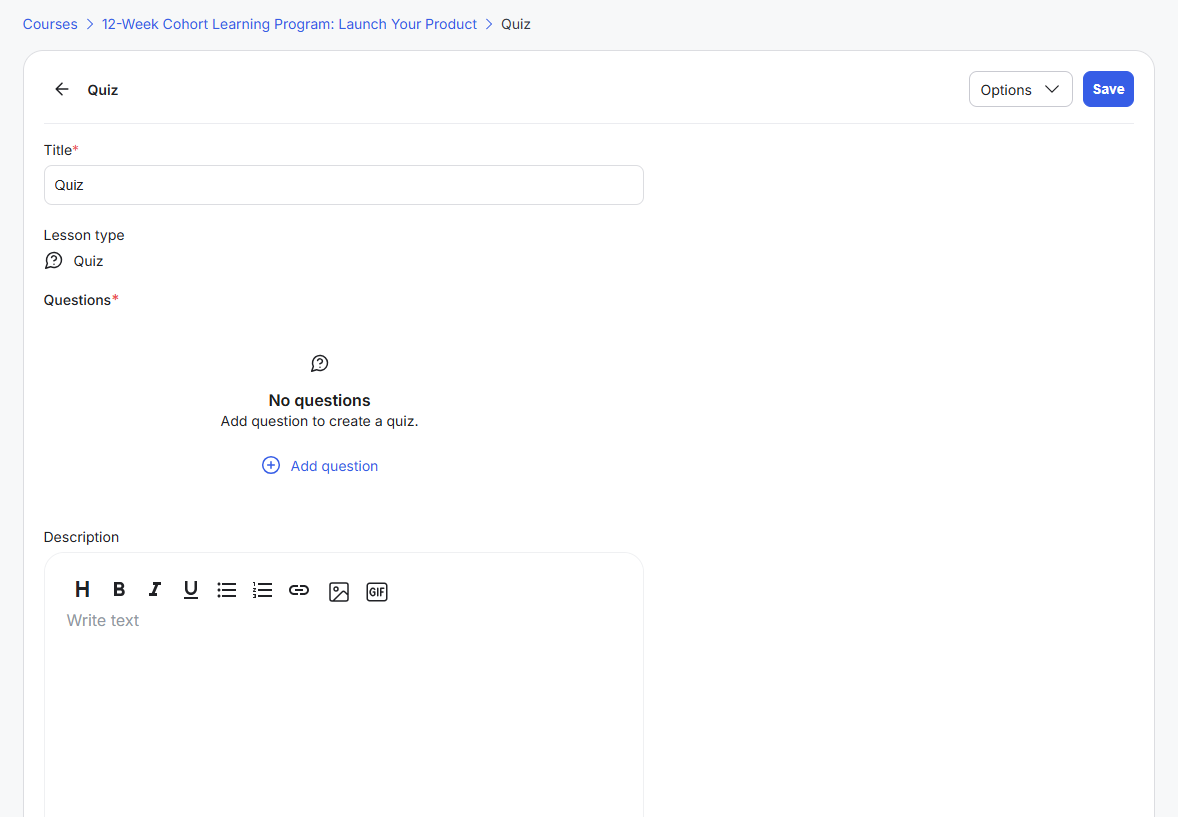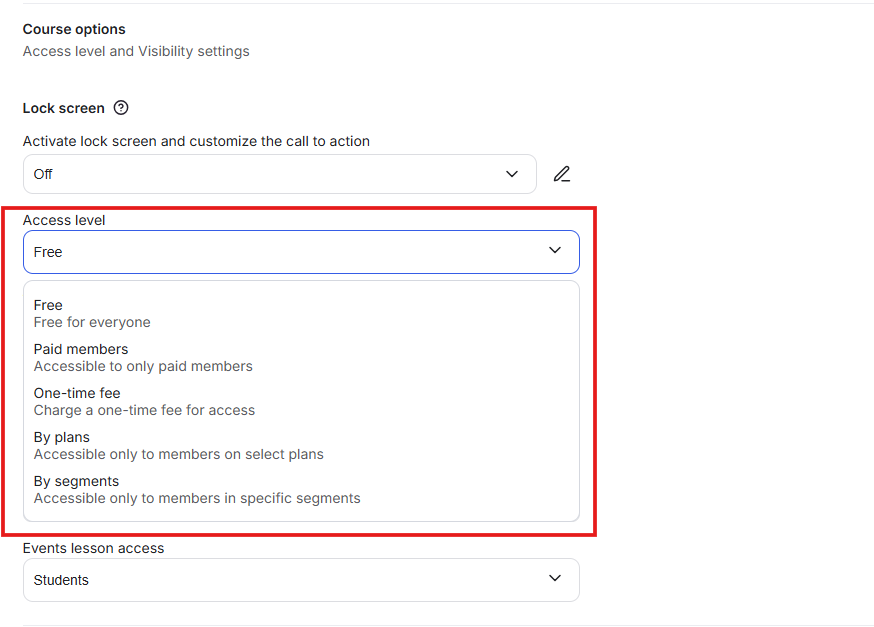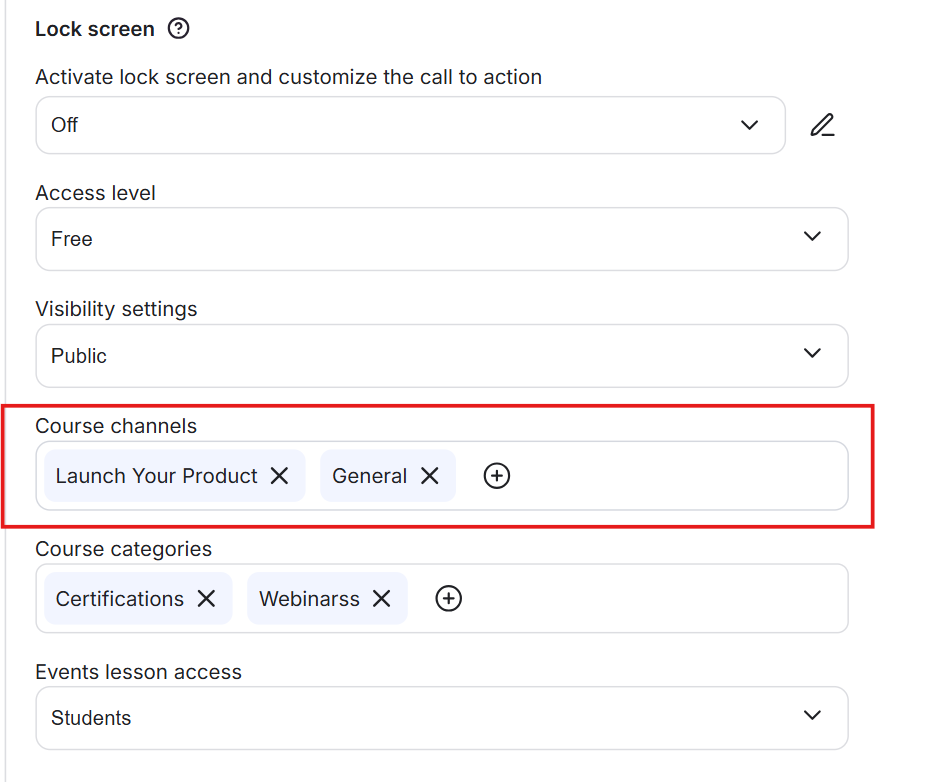The Online Courses feature lets you create, deliver, and monetize full learning programs directly inside GroupApp using the built-in Course Builder. You can build self-paced courses, cohort-based programs with live sessions, certification paths, and mini-courses - all in one system.
Members access all their enrolled courses through the Courses tab in your community. They can also browse other available programs, purchase new ones, or enroll directly, even if the course isn’t part of their current plan. You can sell courses as standalone products or include them within membership tiers.

Centralizes teaching, engagement, and delivery inside one platform.
Works for any format, like live cohorts, evergreen courses, or short training.
Keeps learning organized through categories, modules, and progress tracking.
Builds revenue flexibility with one-time, recurring, or bundled pricing.
Strengthens community connection by linking lessons with discussion channels.

What it is: The drag-and-drop tool for creating your curriculum. Add modules/sections and different lesson types within sections that you can enforce completion on.
What it’s useful for: Builds any type of learning experience, from short workshops to full certification programs.
Examples:
Add recorded videos and PDFs for self-paced learners.
Include event lessons for cohort-based sessions so members can RSVP inside the course.
Drip content or enforce completion rules so members move through lessons in order.

What it is: The different formats you can use for each lesson inside a course.
Lesson types include:
Text: Write lessons directly in GroupApp using the rich text editor for explanations, stories, and step-by-step guidance.
Video link: Embed hosted videos (YouTube, Vimeo, etc.) by link so members can watch without leaving the course.
Uploaded video: Upload video files directly to GroupApp when you want lessons stored and played inside your community.
Form: Add forms to collect inputs, reflections, applications, or feedback as part of the lesson flow.
PDF: Attach workbooks, guides, or slides as downloadable PDF files that members can save and use.
Embed: Pull in external tools or content (like whiteboards, docs, or interactive tools) using embed code.
Waiver: Include consent or agreement steps where members must review and accept terms before moving on.
Quiz: Test understanding with questions and passing criteria to measure whether key concepts are landing.
Assignment: Ask members to submit written work or files so they can apply what they’ve learned in practice.

What it is: Pricing controls that determine how members pay for a course.
What it’s useful for: Gives you flexibility to sell courses as standalone products or bundle them with memberships.
Examples:
Set a one-time price for an evergreen course.
Offer recurring payments for ongoing mentorship or access.
Link courses to premium plans to drive upgrades naturally.
Value:
Turns knowledge into direct revenue.
Supports one-time, recurring, or hybrid models without extra tools.
Keeps payments and access tied together automatically.

What it is: Built-in tools for assessment and participation.
What it’s useful for: Tracks understanding, builds accountability, and helps learners apply what they’ve learned.
Examples:
Add quizzes after lessons and set passing scores.
Collect written or file-based assignments.
Let members view others’ submissions for peer feedback.
Value:
Makes courses interactive instead of passive.
Simplifies grading and progress tracking.
Encourages participation and deeper learning.

What it is: Settings that define who can see and enroll in each course.
What it’s useful for: Keeps premium content exclusive and tailored to the right members.
Examples:
Gate courses by plan, segment, or payment status.
Create free starter courses open to the whole community.
Keep advanced programs private for paid tiers.
Value:
Clean separation between free, paid, and private content.
Automatic access management reduces manual work.
Ensures every learner sees the right material.

What it is: Allows you to link relevant channels to a course.
What it’s useful for: Encourages communication, questions, and peer learning inside the same platform.
Examples:
A Q&A channel for each module or topic.
Cohort discussions during live programs.
Spaces for feedback and reflections.
Value:
Keeps learners engaged beyond lessons.
Builds connection and accountability through conversation.
Replaces external group apps or forums.

What it is: Tools for organizing courses and showcasing instructors.
What it’s useful for: Keeps course lists easy to browse and helps learners recognize the people behind each program.
Examples:
Sort courses by topics like “Foundations,” “Advanced,” or “Certifications.”
Highlight lead instructors or guest presenters for each course.
Display your teaching team for credibility and transparency.
Value:
Makes discovery simple for members.
Builds trust through instructor visibility.
Keeps your course library structured and clear.
Start by deciding what kind of course you want to run (self-paced, live cohort, or hybrid). Outline your learning path before adding content. Keep early courses short and goal-oriented. Once members complete them successfully, expand to longer or more advanced formats.
Self-paced learning: Build evergreen programs that members can join anytime and complete on their own schedule.
Cohort-based programs: Combine live events and drip schedules so learners progress together with structure and accountability.
Certification paths: Require lesson completion, quizzes, and assignments to qualify for a certificate. Perfect for professional or skills-based training.
Hybrid programs: Mix pre-recorded lessons with live sessions and discussions in course channels for a complete experience.
Standalone paid courses: Sell a single course separately to attract new members and later upsell them to memberships.
Upsell and bundle offers: Include advanced courses inside premium plans or cross-promote them from free programs.
Community-based learning: Keep course channels open for peer support, alumni interaction, and ongoing discussion after completion.
Keep lessons short and actionable to maintain momentum.
Add a discussion or event for every major milestone.
Drip content weekly to create rhythm and prevent overwhelm.
Test your course as a learner before publishing.
Update materials regularly to match current programs or cohorts.
Can I sell a course separately from my membership?
Yes. Courses can be sold as standalone products with a one-time charge.
Can I make the course details visible but keep the content restricted?
Yes. You can show the course details publicly while gating access and enrollment by plan or payment.
Can multiple instructors present one course?
Yes. You can assign presenters and team members as instructors for any course.
Next:
How to create online courses
Share your knowledge with your community by creating online courses and selling them to anyone anywhere.
Related:
Course lesson types explained
Learn about course lesson types
Also see:
How to link courses to a channel
Learn how to link courses to a channel